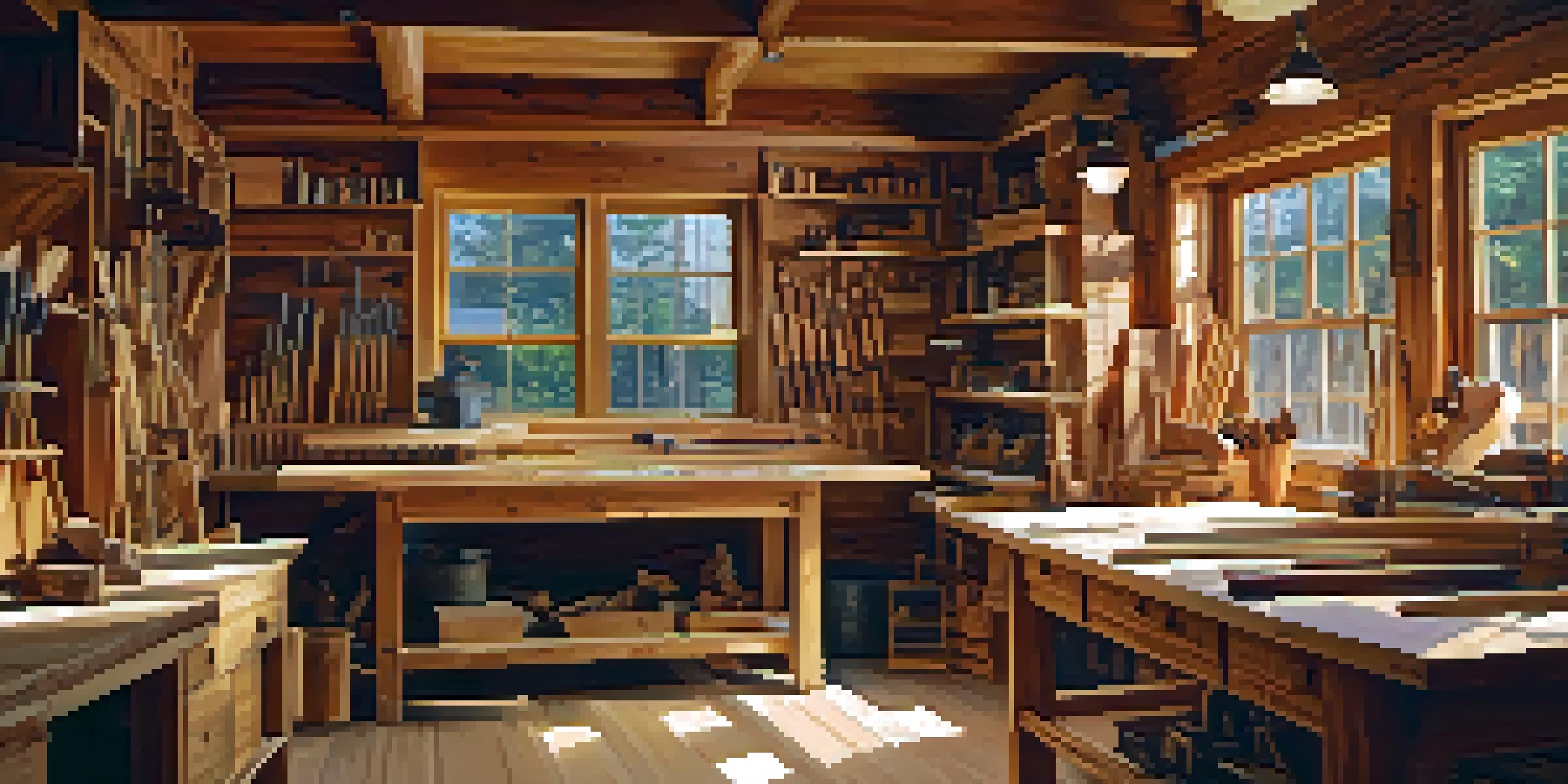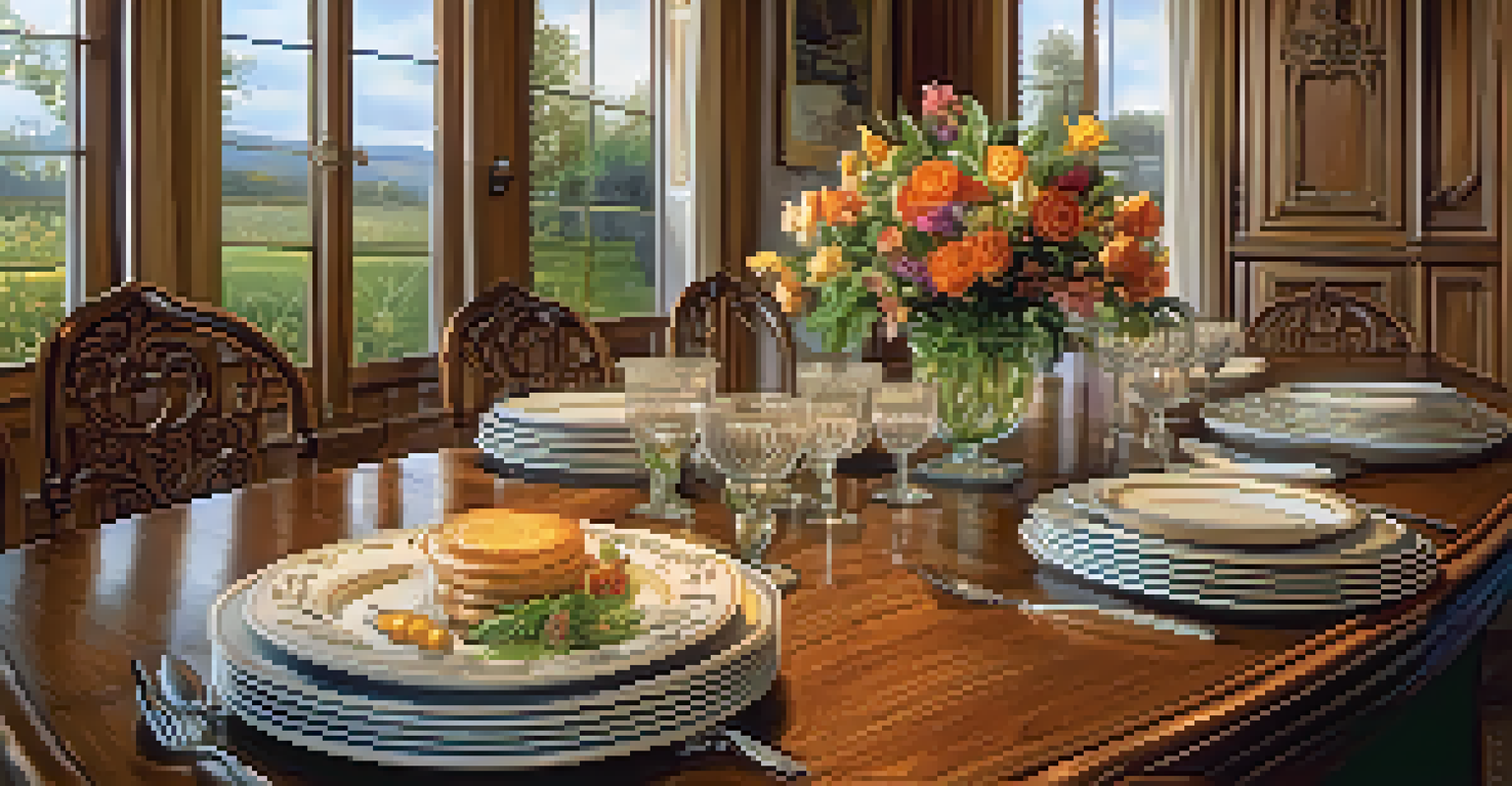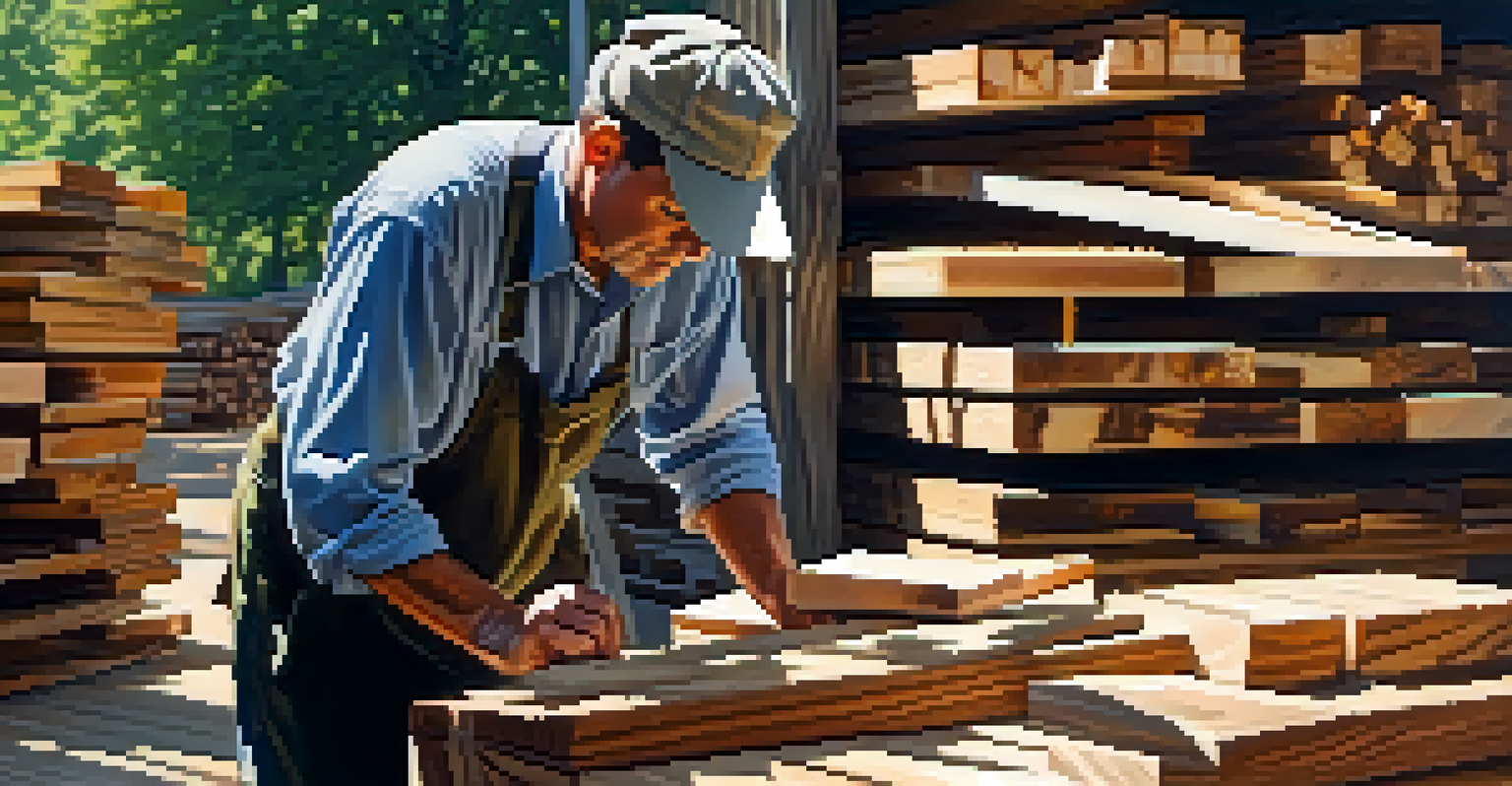Understanding Wood Types for Carving in Furniture Restoration

The Importance of Choosing the Right Wood for Carving
When it comes to furniture restoration, the type of wood you choose can make or break your project. Different woods not only have unique aesthetics but also varying densities and workability. Selecting the right wood ensures that your restoration efforts are not only visually appealing but also structurally sound.
The wood is a material that is alive, and it is important to understand it in order to work with it effectively.
For instance, softer woods like pine are easier to carve but may not hold intricate details as well as harder woods. On the other hand, hardwoods like oak or mahogany provide durability and a beautiful finish but can be more challenging to work with. Understanding these differences is crucial for achieving the desired outcome in your restoration.
Ultimately, the right wood can enhance both the functionality and beauty of your restored furniture. It’s about finding that perfect balance between ease of carving and the final look you want to achieve.
Common Softwoods and Their Carving Characteristics
Softwoods, such as pine, cedar, and fir, are popular choices among beginners due to their ease of manipulation. These woods are lightweight and typically more affordable, making them ideal for practice or smaller projects. Their natural beauty also adds to their appeal, often featuring unique grain patterns and colors.

Carving softwoods can be a delight, as they allow for quick shaping and detailing. However, it's important to note that they can dent or scratch more easily than their hardwood counterparts. Therefore, while they are great for intricate designs, they may require additional care and maintenance over time.
Choose the Right Wood for Carving
Selecting the appropriate wood type is crucial for achieving both aesthetic appeal and structural integrity in furniture restoration.
In furniture restoration, softwoods are often used for less prominent areas or pieces that won't endure heavy use. This makes them a versatile option, especially for decorative elements where the grain and color can stand out beautifully.
Hardwoods: Strength and Durability in Restoration Projects
Hardwoods like oak, walnut, and cherry are renowned for their strength and rich colors, making them favorites in furniture restoration. Unlike softwoods, hardwoods are denser and more resistant to wear, which is essential for pieces that will be used frequently. This durability often justifies their higher price point.
Every piece of wood has its own story, and each tells a different tale when carved and crafted.
Carving hardwoods can be more challenging due to their density, requiring sharper tools and more effort. However, the reward is a beautifully finished product that stands the test of time. The intricate details you can achieve with hardwoods often elevate the overall quality and value of the restored piece.
In restoration, hardwoods are frequently chosen for structural components or areas that receive heavy use. Their longevity and ability to maintain intricate carvings make them a worthy investment for anyone serious about furniture restoration.
Understanding Grain Patterns and Their Impact on Carving
Grain patterns play a significant role in both the aesthetics and functionality of carved furniture. The way the wood fibers are arranged can affect how easily the wood can be carved and how it holds details after finishing. For instance, straight-grained wood is generally easier to work with than wood with a wavy or irregular grain.
Moreover, the grain can also influence the final appearance of your piece. A striking grain pattern can become a focal point, enhancing the visual appeal of the restored furniture. Being mindful of these patterns allows you to plan your carving techniques accordingly, ensuring a successful outcome.
Understand Wood Grain Patterns
Grain patterns significantly influence carving ease and the final appearance of restored furniture, making it essential to examine them carefully.
When selecting wood for restoration, take the time to examine the grain. Understanding its characteristics will not only help you in the carving process but also guide you in choosing the right finish to highlight those beautiful details.
Finishing Techniques for Different Wood Types
Once you’ve carved your furniture piece, the finishing touches are crucial for enhancing its beauty and protecting it from wear. Different wood types respond uniquely to various finishes, so it’s important to choose wisely. For instance, a natural oil finish might highlight the grain of a walnut piece beautifully, while a polyurethane finish might be better suited for softer woods.
Applying the right finish not only enhances the wood’s appearance but also protects it from moisture and damage. A well-finished piece can last for generations, preserving the hard work you've put into your restoration. Additionally, some finishes accentuate the wood’s color, while others add warmth or depth.
Experimenting with different finishing techniques can yield stunning results, allowing you to customize the look of each piece. Always remember to test any finish on a small area first to see how it interacts with the wood type you've chosen.
Tools and Techniques for Carving Different Wood Types
The tools you use for carving can significantly affect your results, especially when working with different wood types. Softer woods generally require simpler tools such as carving knives or gouges, while harder woods may necessitate more specialized equipment like chisels or electric carving tools. Choosing the right tools not only makes the process easier but also enhances the quality of your work.
In addition to the tools, the techniques you employ can vary based on the wood type. For example, softwoods may allow for more aggressive carving techniques, while hardwoods might require a more delicate touch to achieve fine details. Understanding these nuances can lead to a more enjoyable and successful carving experience.
Tools Matter for Wood Types
Using the right tools and techniques tailored to the wood type enhances the carving process and overall quality of the restoration.
As you gain experience, you'll develop a feel for what works best with each wood type. Don’t be afraid to experiment with different tools and techniques to find your personal style and approach to furniture restoration.
Sourcing Quality Wood for Restoration Projects
Finding high-quality wood is essential for any successful furniture restoration project. Local lumberyards, specialty wood suppliers, and even reclaimed wood sources can provide a range of options. It's worth investing time in selecting the right wood, as this can significantly impact the final quality of your work.
When sourcing wood, consider factors such as sustainability and availability. Many artisans prefer reclaimed wood not only for its unique character but also for its eco-friendliness. This type of wood often has a story behind it, adding to the charm of the restored piece.

Take the time to inspect the wood before purchasing, looking for imperfections or inconsistencies that might affect your carving. A little effort in sourcing can lead to a more satisfying restoration experience and a beautiful final product.